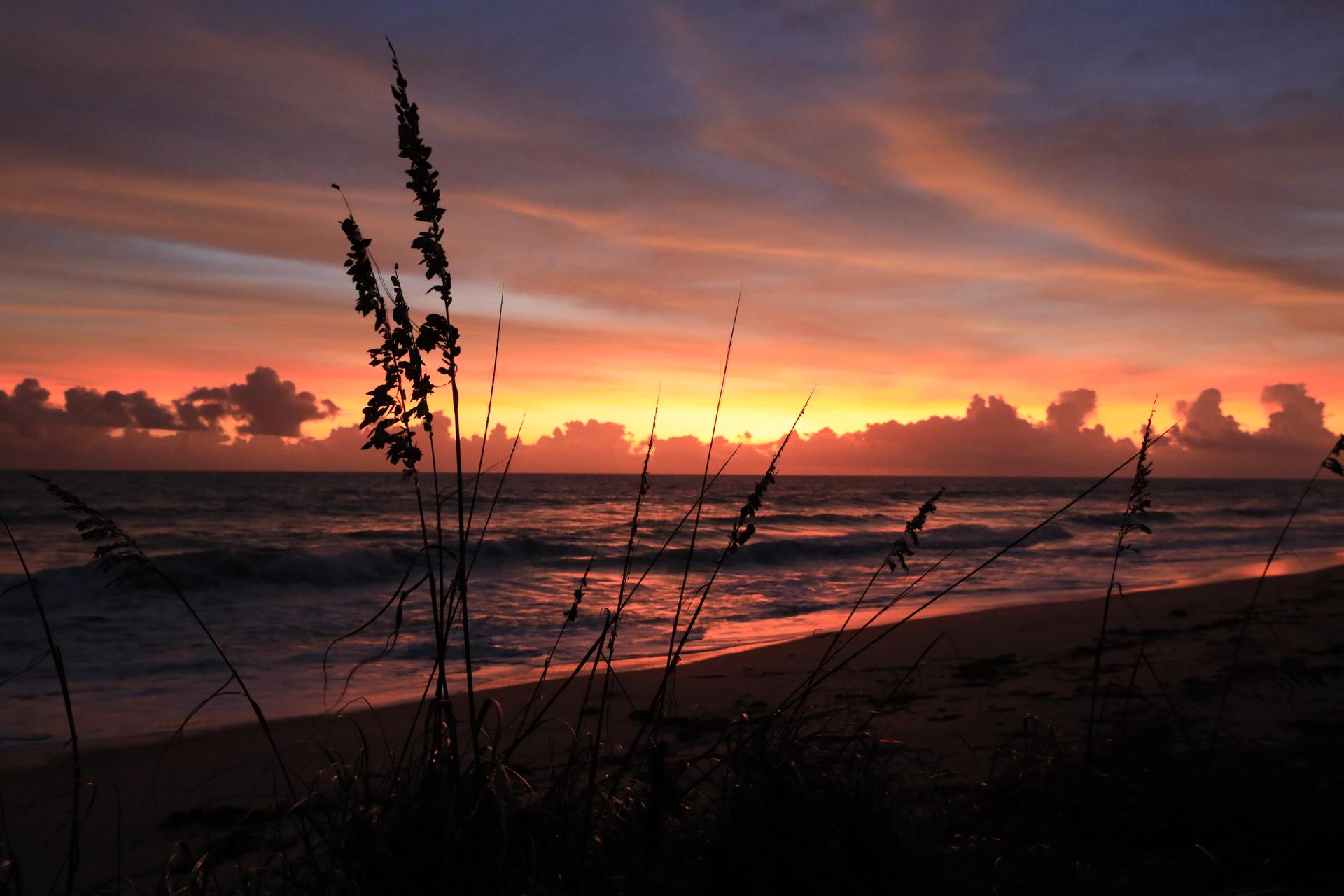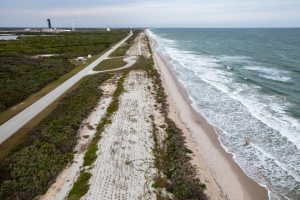
Situated beside the Atlantic Ocean on the east coast of central Florida, NASA’s Kennedy Space Center has critical space facilities, launch infrastructure, a world-class workforce, and wildlife to protect from the unique weather threats posed by tropical cyclones. The elevated sandbank along the spaceport’s shoreline is the crucial first line of defense against these storms and the resulting erosion.

Kennedy recently completed the second phase of an ongoing project to plant vegetation on the dune, which has been replenished with additional sand to rebuild its natural structure. The addition of native plants helps prevent erosion while providing habitats for some of the vulnerable, threatened, and endangered species that have settled at the Florida spaceport.
The shoreline restoration project successfully rebuilt about four-and-a-half miles of dune during two construction phases. Workers trucked in nearly 38,000 loads of sand to strengthen the dune and roads around the space center, which has frequent brushes with severe weather, especially during the June to November hurricane season. Added vegetation provided the finishing touch to help protect the dunes.
Native coastal plants such as sea oats, sea grape, and railroad vine were selected because they’re specifically adapted to grow in the coastal environment, which includes loose, shifting, sandy soils, along with salt water and salt spray. Additionally, their deep root systems serve as an anchor, stabilizing dune systems. The plantings were carefully planned and installed as each section of dune replenishment was completed.
“It takes a year or so for the plants to reach maturity, and that’s also dependent on rainfall once they’re established,” said Don Dankert, technical lead for Kennedy Space Center Environmental Planning. “You can see the succession of plants as you look down the dune from north to south. The vegetation in the northern section is much more robust – it was planted first.”
Kennedy’s Environmental Management Branch, part of the center’s Spaceport Integration and Services directorate, planned the placement of the vegetation to mimic the clusters and open spaces found in a natural dune system.
“Some of the federally threatened and endangered species that live in our coastal areas are gopher tortoises, southeastern beach mice, indigo snakes, and sea turtles,” Dankert said. “The newly created dune provides habitat for these species. For example, for sea turtles, the dune helps to protect our beach from light intrusion, which in turn aids nesting and hatchling turtles by reducing disorientation during the nesting season.”
The dune has held up well since the restoration project began in 2018, with only minor loss of sand on the dune’s eastern side when Hurricane Dorian passed along the coast.
The Environmental Management Branch will continue to monitor the dune for signs of erosion, including pre- and post-storm assessments during hurricane season. The team also will track the health of the vegetation as well as the use of the dune environment by wildlife throughout the next two years.
